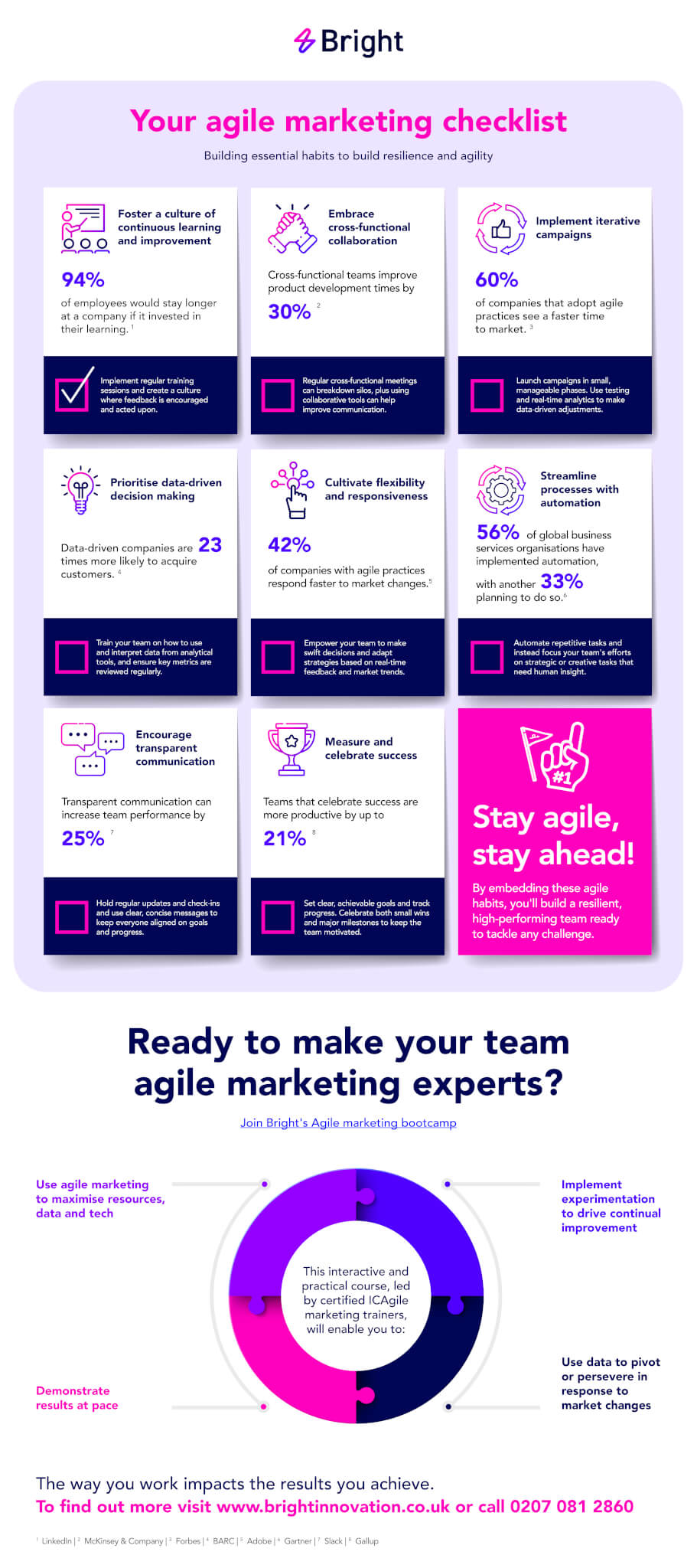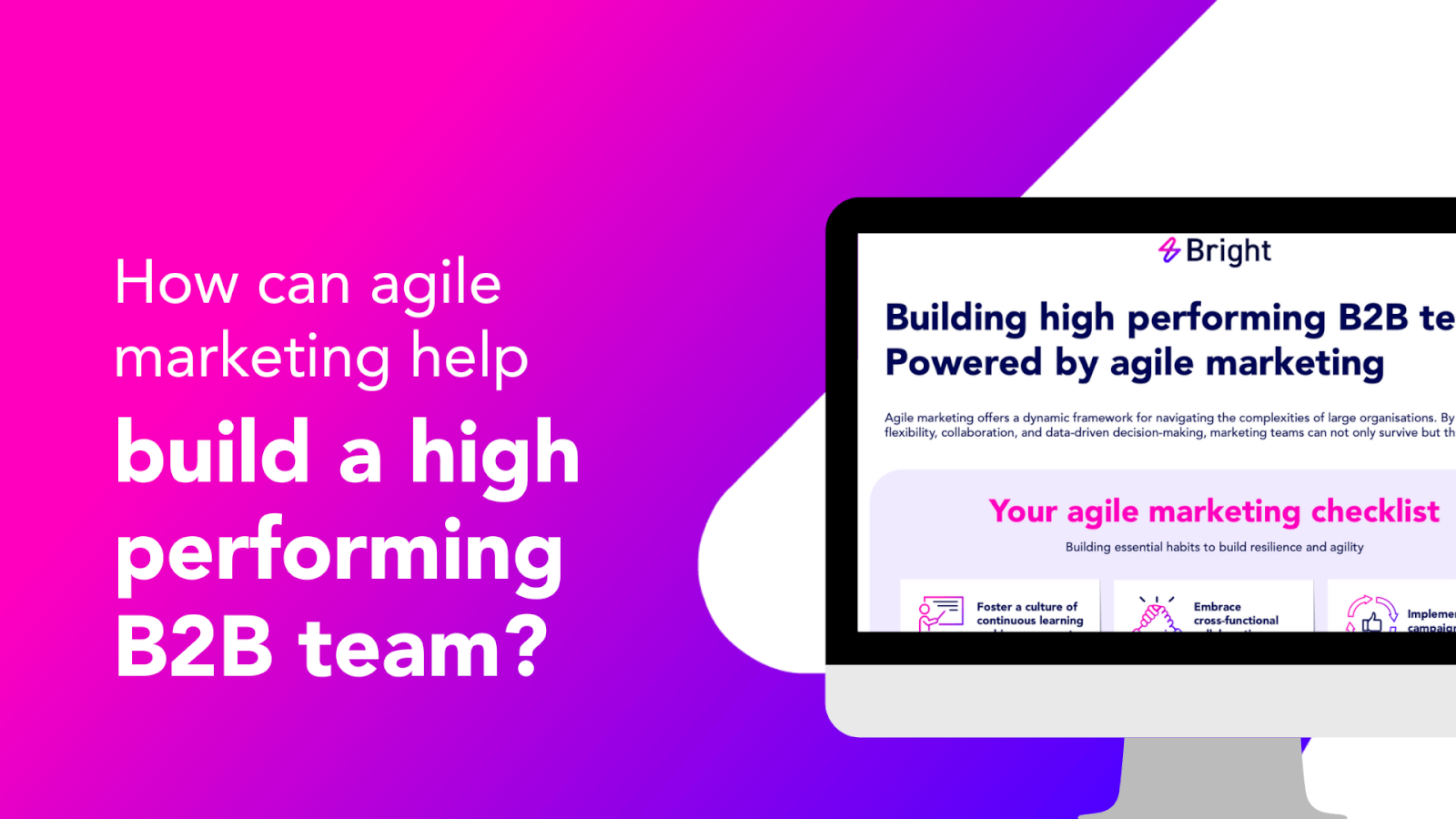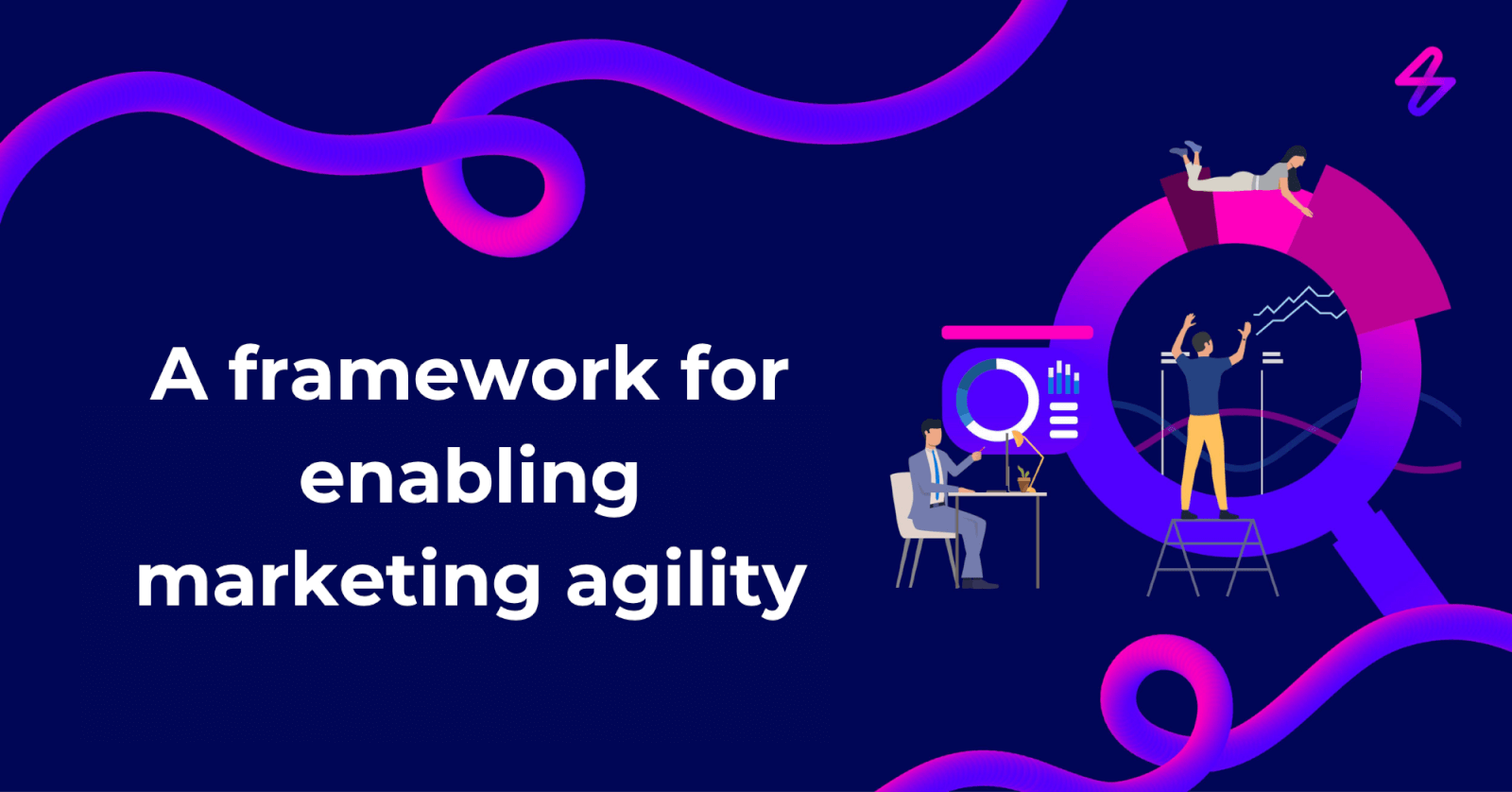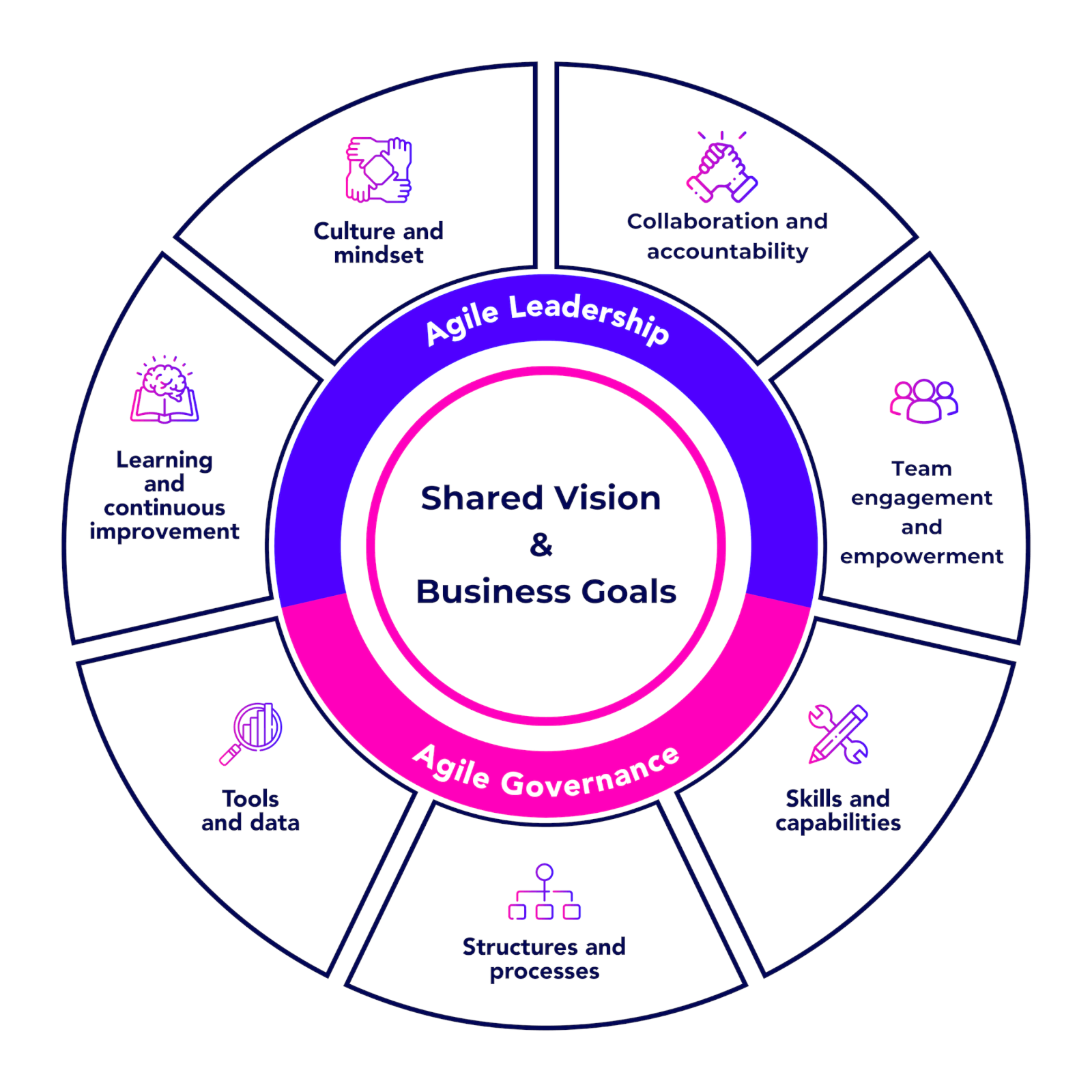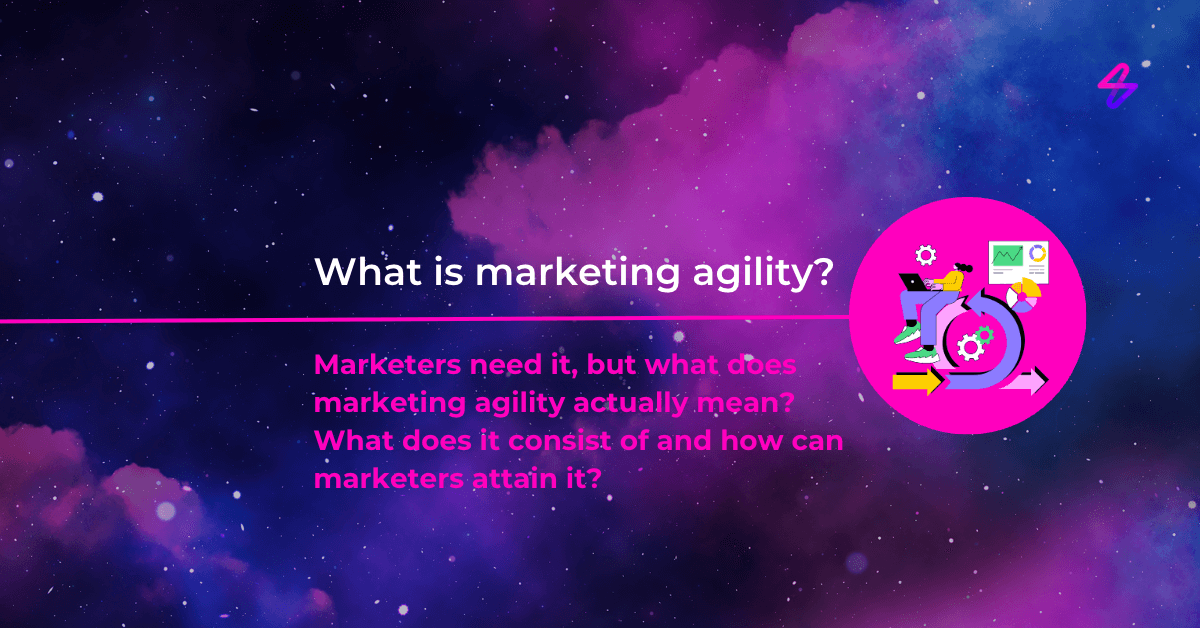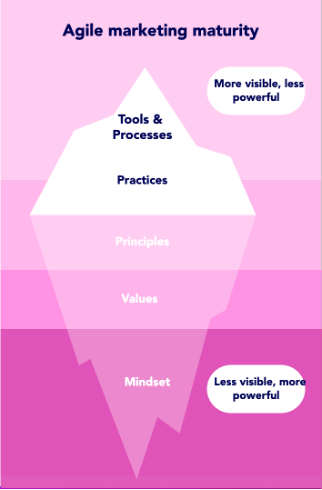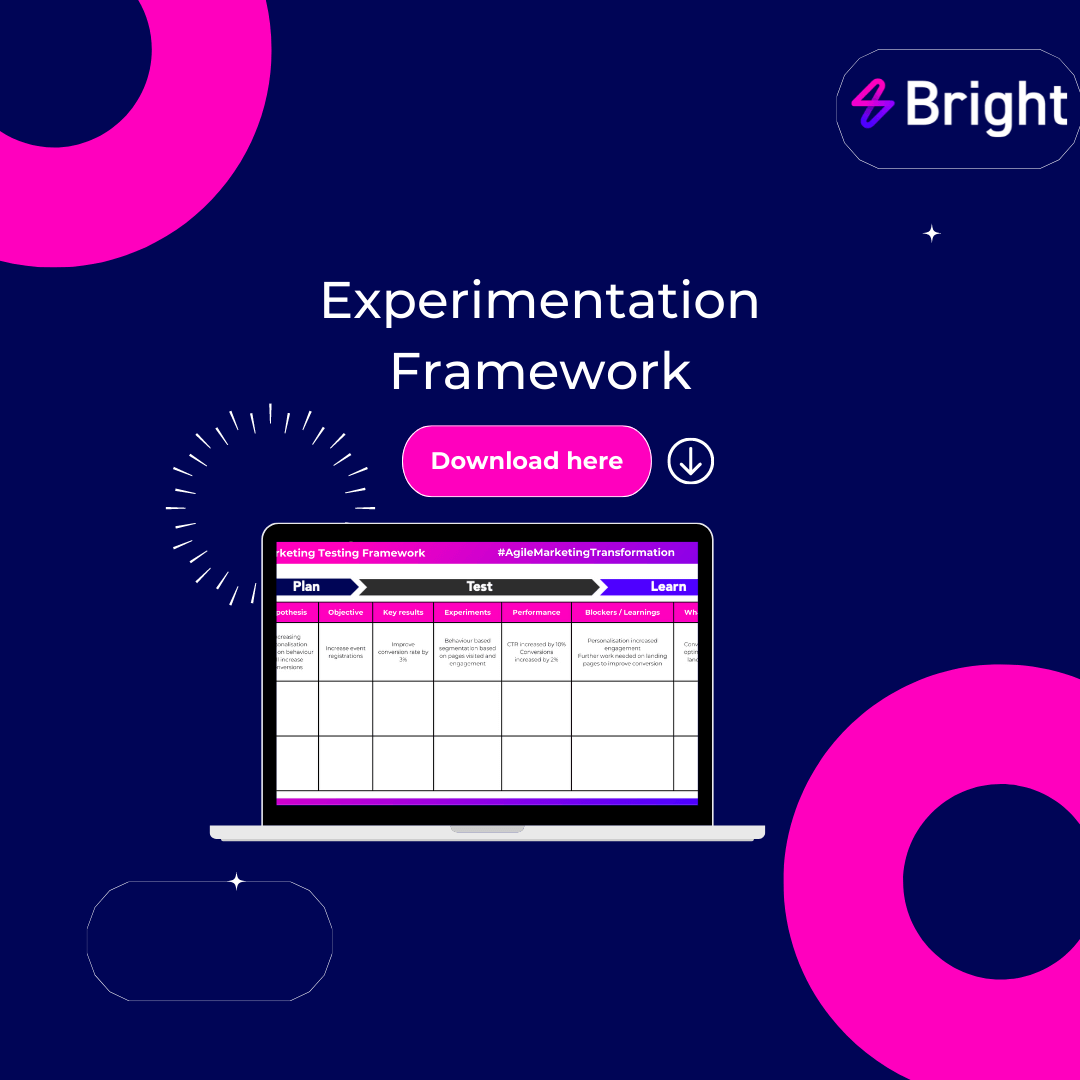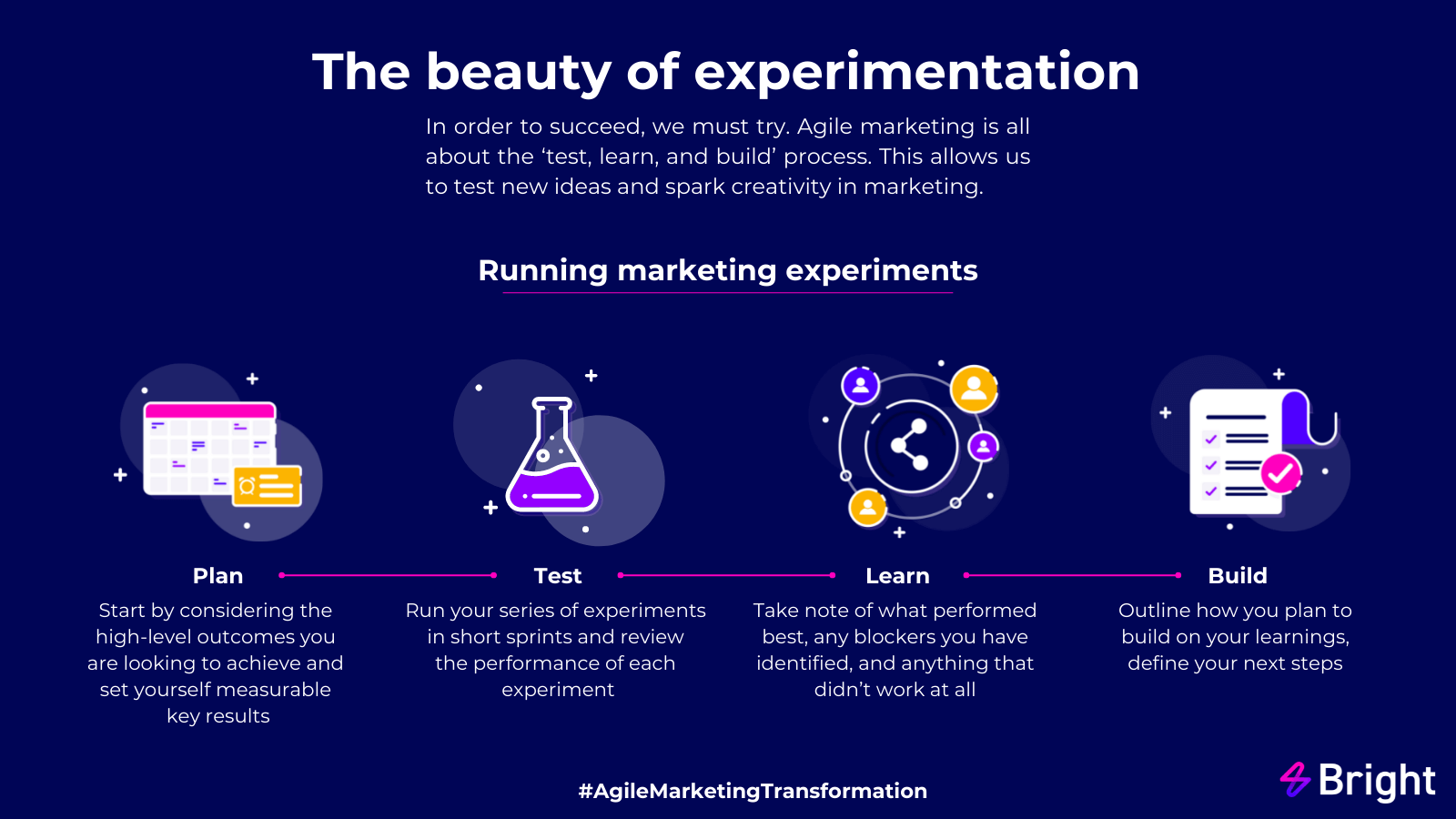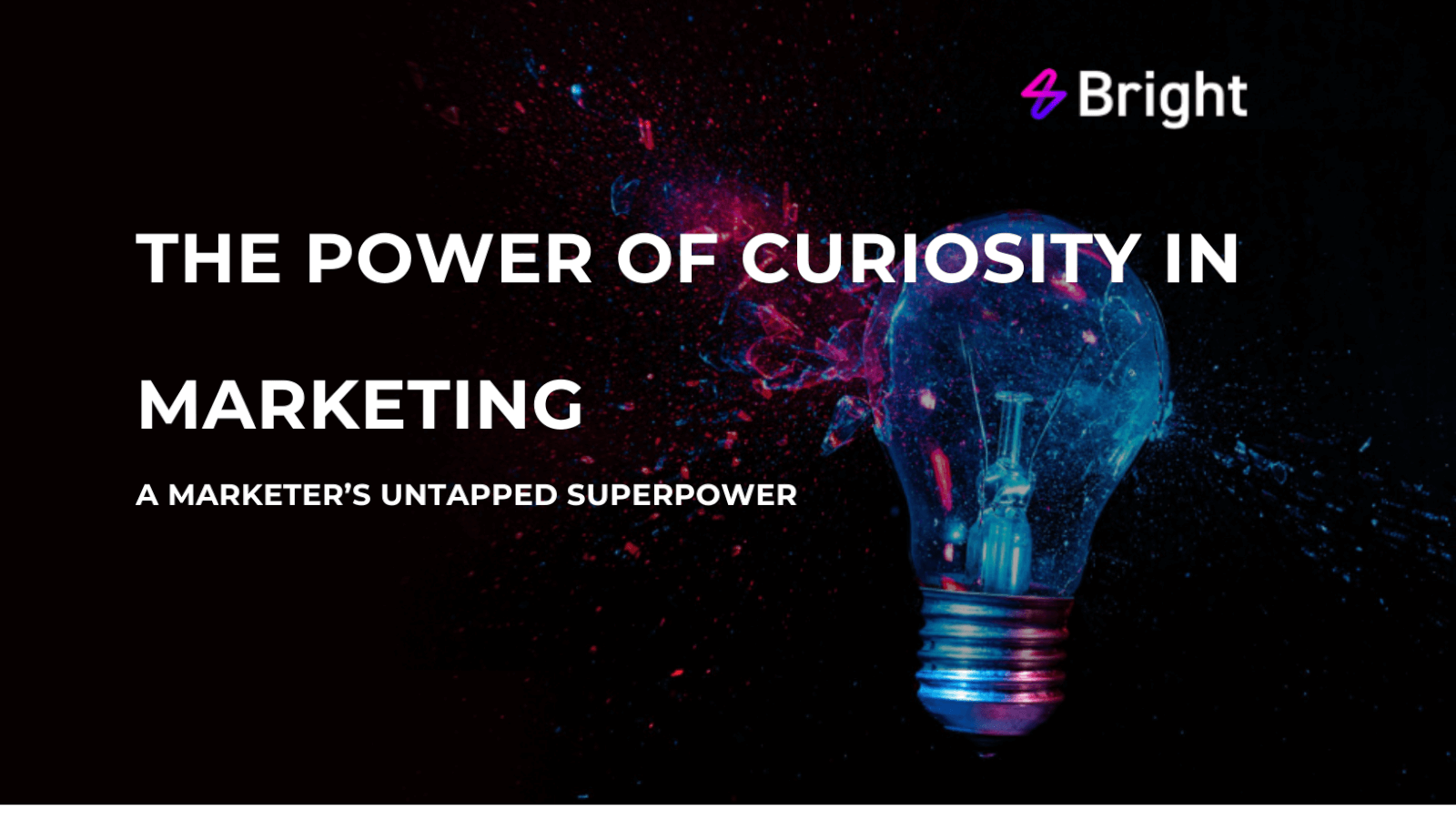The importance of testing and experimentation in improving your marketing performance
Your marketing campaign isn’t producing the results that you may have hoped for, and it doesn’t look like it’s going to change. With too many variables, how can your team identify what’s working and what isn’t? Experiment – to find out what the customer really reacts to.
One element sets agile marketing apart from traditional marketing – the emphasis on deliberate experimentation. Marketers have a lot to gain from testing their assumptions through experimentation before going all-in on any given idea, and the agile marketing process gives them the freedom to do so.
Experimentation allows marketing teams to make incremental changes, to work out what works best for their customer. And even if the experiment doesn’t produce the desired results, it won’t have taken up too much budget or resources, and you’ll have gained more knowledge about exactly what your customer wants.
Experimentation is an important tool that can lead you to improved marketing success, but that doesn’t mean you should just test anything – making educated guesses based on observations and feasibility can see strong results.
How to identify opportunities for experimentation
When it comes to experimentation, the first step is finding opportunities for testing. Consider areas where there is room for improvement or potential for growth. Is a new product being launched? What campaigns aren’t driving the desired results? Encourage your team to develop solutions and possible tests they would like to run. They may have suggestions for how something could be improved or different approaches that could make a positive impact.
It’s also important to analyse data and track metrics consistently to identify potential areas of experimentation. By continuously seeking out opportunities and gathering information, we can increase our chances of finding experiments with the potential for successful outcomes.
Implementing an experimentation culture within your team
Encourage everyone to brainstorm potential solutions and approach problems from unique perspectives. Give them the freedom to test out their ideas, even if they seem a little out there at first (understand why in our blog on the Power of Curiosity). And be sure to debrief after each experiment – what went well, what could have been improved upon, and how can those learnings be applied going forward? By embracing experimentation, you might uncover the next big breakthrough for your team, in how they work and where they focus their efforts. The worst case scenario is that things don’t work out. Failure is the perfect opportunity to learn, drive your team to continually improve and achieve business outcomes. Be open to the growth mindset, always asking “what did we learn?”
The importance of data-driven decision making in marketing
In today’s highly competitive business environment, relying on gut instinct alone isn’t enough to remain successful. That’s where data-driven decision making comes in. By gathering and analysing relevant data and insights, marketers are able to make informed decisions about their strategies and tactics. This not only increases the effectiveness of campaigns, but it also helps companies save time and resources by eliminating any guessing or trial-and-error approaches. Additionally, data-driven decision making boosts efficiency by identifying key performance metrics and areas for improvement. It’s clear that those who incorporate data into their marketing efforts will see a significant advantage over their competitors. For modern marketers, embracing a data-driven approach is no longer an option – it’s a necessity.
Measuring the success of your marketing experiments
Gone are the days of lengthy and rigid marketing campaigns – enter agile marketing. Agile marketing allows for a more fluid approach, allowing for experimentation and quick pivots in response to results. As already mentioned, measuring success is key. Set clear goals and metrics from the beginning, such as conversion rates. If you’re going big with your experiment, you might want to consider gathering feedback from customers through surveys or focus groups, asking them about their experiences with your brand. Keeping a close eye on data and listening to customer responses can help you determine whether a particular experiment was successful and guide your decision-making moving forward. By embracing an agile mindset and constantly assessing the effectiveness of your experiments, you can ensure that each decision made leads to maximum success for your marketing strategies.
By experimenting, you can increase your chances of success while also learning what works and what doesn’t. Not all experiments will be successful, but that’s okay! The important thing is to learn from each one and apply those learnings to future campaigns. Ready to get started? Download our quick guide to experimentation, plus a framework to start designing your experiments. And remember to measure what you test, so you can take the learnings forward.
